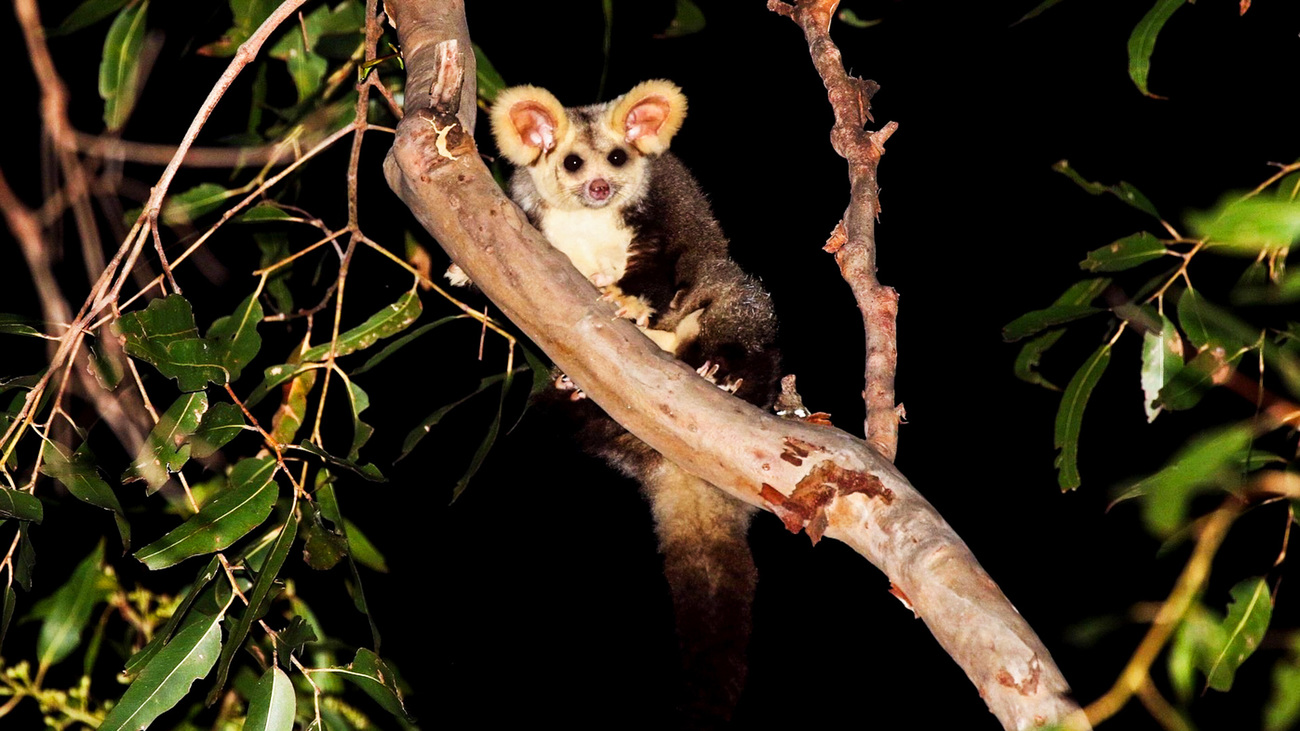Blog
These animals have some of the biggest eyes in the world
Read moreTracking greater gliders and brush-tailed rock-wallabies

Landholders in south-east Queensland are being invited to embrace their inner sleuth to find threatened species in their area and help protect them.
Greater gliders and brush-tailed rock-wallabies are difficult to spot in the wild given their elusive nature. Conservation groups hope that engaging the community to learn about their behaviours and movements will help direct efforts to better protect them and their habitats.
Landholders will learn about both species, how and where they can be spotted in the wild, and how they can help conserve them at a workshop on May 18, presented by Wildlife Queensland and hosted by Lockyer Uplands Catchment Inc (LUCI).
The workshop is part of Koala Climate Corridors, a project spearheaded by IFAW and Great Eastern Ranges to help wildlife adapt and communities build resilience to climate change. LUCI is leading the project across this first corridor, Bunyas to Border, which stretches from the Bunya Mountains to the Border Ranges.
IFAW Wildlife Campaigns Manager Josey Sharrad said landholders played a critical role in helping us to better help our iconic and threatened species.
“Landholders are our eyes and ears on the ground. We rely on them to provide us with invaluable information that will help us find better ways to protect these two elusive species and the places they call home. Australian wildlife faces a plethora of challenges – and it’s up to all of us to help ensure we continue to see these iconic animals in the wild into the future,” Ms Sharrad said.
Great Eastern Ranges CEO Gary Howling said greater gliders and brush-tailed rock-wallabies are both threatened species that are negatively impacted by habitat fragmentation.
“Tracking these beautiful animals helps us understand their movements through the landscape, which in turn will help us build the most effective connections in what is a vital corridor for many species,” Mr Howling said.
Justine Rice, local project coordinator for Koala Climate Corridors, said the workshop was an opportunity for landholders and local groups to come together and learn from each other and the experts.
“This is an exciting milestone in the Bunyas to Border project, signifying the activities focused on greater glider and brush-tailed rock-wallaby conservation. This workshop, presented by Wildlife Queensland, offers an opportunity for landholders and the public to learn about the ecology, biology, and conservation needs of these threatened species, local to the surrounding area,” she said.
The collaboration with Wildlife Queensland has helped to identify priority areas within the corridor through spatial mapping, allowing GER, IFAW and LUCI to focus efforts on surveying, monitoring, and nest box installation.
Greater gliders are large, hollow-dependent species that need old-growth trees which are a declining resource across the region. Brush-tailed rock-wallabies are elusive and prefer to live in rocky habitats with small, isolated populations found in mountainous terrain.
Anyone within the vicinity of greater glider populations is encouraged to install canopy nest boxes, protect old hollow-bearing trees, and advocate for the species with governments. Any sightings of brush-tailed rock wallabies or identification of their preferred habitat should be recorded and shared with conservation groups.
The free workshop will be held at Helidon Hall, Helidon. Registration is limited but for more information, contact Justine at justine@lockyeruplandscatchmentsinc.org.au.
ENDS
Notes:
Press contacts:
Dominica Mack, IFAW
dmack@ifaw.org
0460 432 901
About the International Fund for Animal Welfare - IFAW is a global non-profit helping animal and people thrive together. We are experts and everyday people, working across seas, oceans and in more than 40 countries around the world. We rescue, rehabilitate and release animals, and we restore and protect their natural habitats. See how at ifaw.org
About the Great Eastern Ranges (GER) – Since 2007, the Great Eastern Ranges has brought people together to stem the loss of native wildlife and their habitats, provide natural solutions to the climate crisis, protect precious resources, and ensure thriving, resilient landscapes and ecosystems for nature and people. Today, we are one of the world’s largest conservation initiatives, delivering environmental, health, cultural and socio-economic benefits across eastern Australia through our extensive network of local, regional, and national partners.
About Lockyer Uplands Catchments Inc (LUCI) – Incorporated since 2016, LUCI is a not-for-profit association of landholder and their supporters dedicated to maintaining and restoring native habitats on private property and enhancing connections between native habitats on public and private lands at the local and regional scale. In addition to habitat management actions, LUCI members undertake wildlife monitoring projects and a range of community education events. Visit our website provides further information on the scope of our activities www.lockyeruplandscatchmentsinc.org.au
Every problem has a solution, every solution needs support.
The problems we face are urgent, complicated, and resistant to change. Real solutions demand creativity, hard work and involvement from people like you.
Unfortunately, the browser you use is outdated and does not allow you to display the site correctly. Please install any of the modern browsers, for example:
Google Chrome Firefox Safari